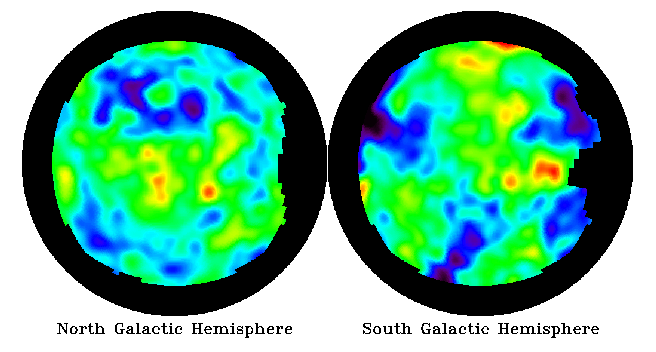
|
Explanation: Above are two images of the microwave sky, north and south of our galaxy's equator, based on data from NASA's COsmic Background Explorer (COBE) satellite. After computer processing to remove contributions from nearby objects and the effects of the earth's motion, they show "spots". These spots are the oldest, most distant structures known. They represent temperature variations in the early Universe. As our Universe expanded and cooled, conglomerations of mass formed. The COBE images confirm that only a million years after the big-bang - which occurred roughly 15 billion years ago - parts of the universe were visibly hotter than other parts. By studying the size and distribution of the spots found with COBE and future missions, astronomers hope to learn what matter and processes caused the spots to form - and hence determine the composition, density, and future of our Universe.
|
January February March April May June July August September October November December |
| |||||||||||||||||||||||||||||||||||||||||||||||||||||||
NASA Web Site Statements, Warnings, and Disclaimers
NASA Official: Jay Norris. Specific rights apply.
A service of: LHEA at NASA / GSFC
& Michigan Tech. U.
Based on Astronomy Picture
Of the Day
Publications with keywords: COBE - hotspots
Publications with words: COBE - hotspots
See also:
